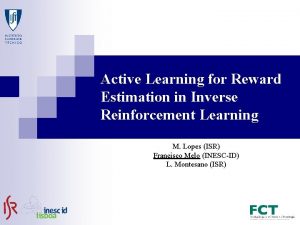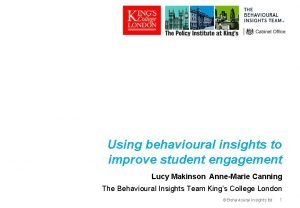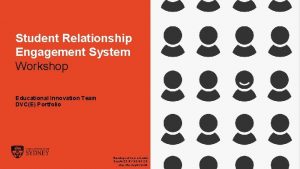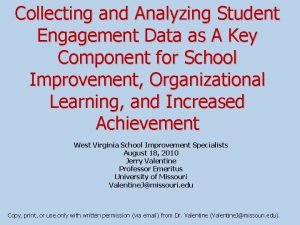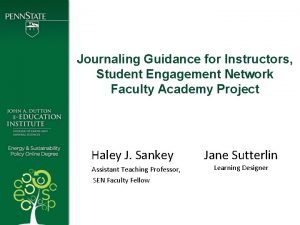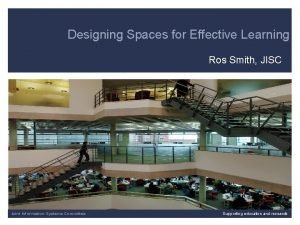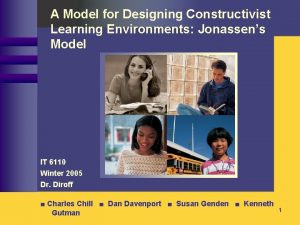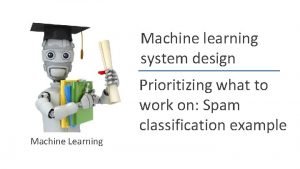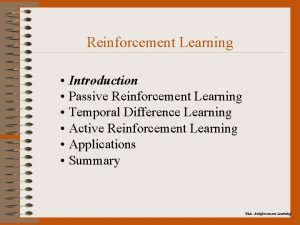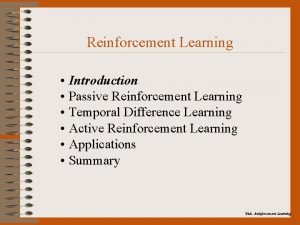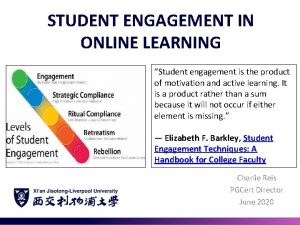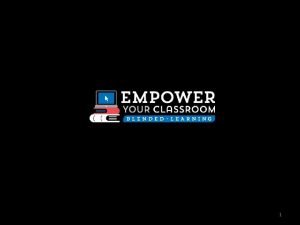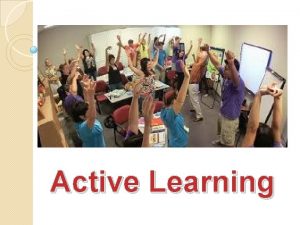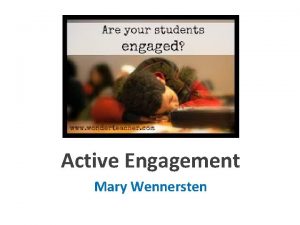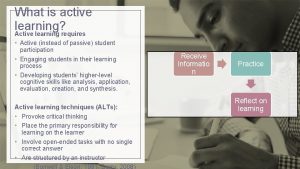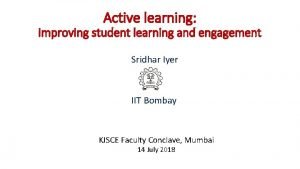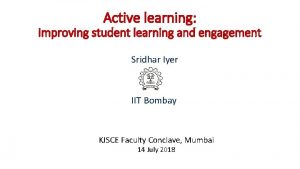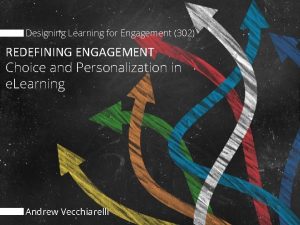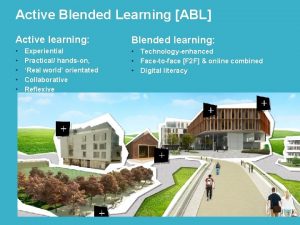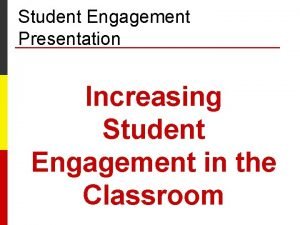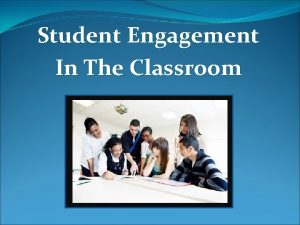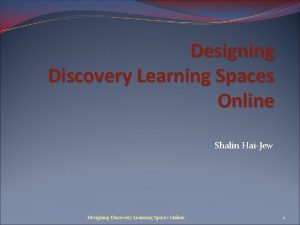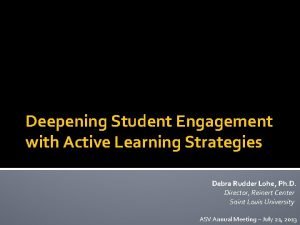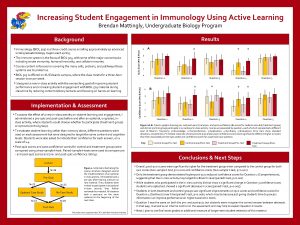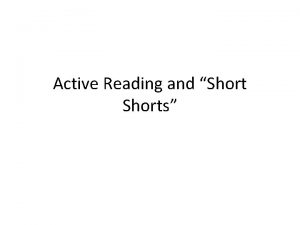Designing for Active Learning and Student Engagement Online


















- Slides: 18

Designing for Active Learning and Student Engagement Online Mary Jacob Learning and Teaching Enhancement Unit

Models for framing our thinking • • Online engagement framework for HE Bloom’s taxonomy – higher orders of thinking ICAP: Interactive / Constructive / Active / Passive ABC learning design – six activity types After this session, you should be able to: • apply these models to your own practice • teach online with active learning

Social Online engagement framework for HE Emotional Cognitive Engagement Collaborative Behavioural Redmond, P. , Heffernan, A. , Abawi, L. , Brown, A. , & Henderson, R. (2018). An Online Engagement Framework for Higher Education. Online Learning, 22(1), 183– 204.

Online engagement framework for HE Social engagement Building community Creating a sense of belonging Developing relationships Establishing trust Cognitive engagement Thinking critically Activating metacognition Integrating ideas Justifying decisions Developing deep discipline understandings Distributing expertise Behavioural engagement Developing academic skills Identifying opportunities and challenges Developing multidisciplinary skills Developing agency Upholding online learning norms Supporting and encouraging peers Collaborative engagement Learning with peers Relating to faculty members Connecting to institutional opportunities Developing professional networks Emotional engagement Managing expectations Articulating assumptions Recognising motivations Committing to learning Redmond, P. , Heffernan, A. , Abawi, L. , Brown, A. , & Henderson, R. (2018). An Online Engagement Framework for Higher Education. Online Learning, 22(1), 183– 204.

Active learning is when students carry out a cognitive task.

Bloom’s taxonomy Evaluation Synthesis Analysis Application Comprehension Knowledge Based on Bloom, B. S. , Taxonomy of educational objectives: the classification of educational goals. New York: David Mc. Kay Co. [London]: Longman, 1956.

Bloom’s taxonomy updated Create Evaluate Analyse Higher order of thinking = active cognitive task Apply Understand Remember Based on Anderson, L. W. , Krathwohl, D. R. , Airasian, P. W. , Cruikshank, K. A. , Mayer, R. E. , Pintrich, P. R. , Raths, J. D. , . . . Bloom, B. S. (2001). A taxonomy for learning, teaching, and assessing: A revision of Bloom's Taxonomy of educational objectives. New York: Addison-Wesley.

ICAP Characteristics First 3 involve active cognitive tasks Interactive Constructive Dialogue with other students or teacher Produce output beyond Do something, often given information, discovery physical learning Receive given information Self-construction activities : Engaging activities: explain, elaborate, concept underline, point, map, plan/predict outcomes paraphrase, manipulate objects, select, repeat No activities : Listen, read, or watch without an associated cognitive task Overt activities Instructional dialogue or joint dialogue : revise errors from feedback, or build on partner’s contribution Cognitive processes Creating jointly : Creating individually : create while incorporating infer new knowledge, partner’s contributions integrate new with existing knowledge, restructure own mental model Active Attending: activate existing knowledge, store new information Passive Receiving: Chi, M. T. H. (2009). Active-Constructive-Interactive: A Conceptual Framework for Differentiating Learning Activities. Topics in Cognitive Science, 1, 1, 73 -105.

ABC Learning Design activity types Acquisition Collaboration Production 3 - minute video from Diana Laurillard Except acquisition, all are necessarily active Practice Discussion Investigation Young, C. & Perović, N. (2016). Rapid and Creative Course Design: As Easy as ABC? , Social and Behavioral Sciences 228, Pages 390 -395. Laurillard, D. (2012). Teaching as a design science: Building pedagogical patterns for learning and technology. New York, NY: Routledge.

ABC Learning Design - Acquisition Young, C. & Perović, N. (2016). Rapid and Creative Course Design: As Easy as ABC? , Social and Behavioral Sciences 228, Pages 390 -395. Laurillard, D. (2012). Teaching as a design science: Building pedagogical patterns for learning and technology. New York, NY: Routledge.

ABC Learning Design - Collaboration Young, C. & Perović, N. (2016). Rapid and Creative Course Design: As Easy as ABC? , Social and Behavioral Sciences 228, Pages 390 -395. Laurillard, D. (2012). Teaching as a design science: Building pedagogical patterns for learning and technology. New York, NY: Routledge.

ABC Learning Design – Investigation Young, C. & Perović, N. (2016). Rapid and Creative Course Design: As Easy as ABC? , Social and Behavioral Sciences 228, Pages 390 -395. Laurillard, D. (2012). Teaching as a design science: Building pedagogical patterns for learning and technology. New York, NY: Routledge.

ABC Learning Design - Discussion Young, C. & Perović, N. (2016). Rapid and Creative Course Design: As Easy as ABC? , Social and Behavioral Sciences 228, Pages 390 -395. Laurillard, D. (2012). Teaching as a design science: Building pedagogical patterns for learning and technology. New York, NY: Routledge.

ABC Learning Design - Practice Young, C. & Perović, N. (2016). Rapid and Creative Course Design: As Easy as ABC? , Social and Behavioral Sciences 228, Pages 390 -395. Laurillard, D. (2012). Teaching as a design science: Building pedagogical patterns for learning and technology. New York, NY: Routledge.

ABC Learning Design - Production Young, C. & Perović, N. (2016). Rapid and Creative Course Design: As Easy as ABC? , Social and Behavioral Sciences 228, Pages 390 -395. Laurillard, D. (2012). Teaching as a design science: Building pedagogical patterns for learning and technology. New York, NY: Routledge.

Mapping ABC, ICAP, and Bloom There is more than one ‘right’ answer. ABC Learning Design ICAP Bloom’s taxonomy Acquisition Passive? Remember Collaboration Interactive depends on task Investigation Constructive Evaluate Discussion Interactive Understand Practice Active Apply Production Constructive Create

Key message Have students do an active cognitive task – not just passively absorb information.

Additional references • Chickering, A. W. , Gamson, Z. F. , Poulsen, S. J. , & Johnson Foundation (Racine, Wis. ). (1987). Seven principles for good practice in undergraduate education. Racine, WI: Johnson Foundation. • Bonwell, C. C. , & Eison, J. A. (1991). Active learning: Creating excitement in the classroom. Washington, D. C: School of Education and Human Development, George Washington University.
 -is not one of the purposes for giving oral presentations.
-is not one of the purposes for giving oral presentations. Sls learning login
Sls learning login Passive learning vs active learning
Passive learning vs active learning Inverse reinforcement learning
Inverse reinforcement learning Lucy makinson
Lucy makinson Student relationship engagement system
Student relationship engagement system Australasian survey of student engagement
Australasian survey of student engagement Student engagement data
Student engagement data Student engagement presentation
Student engagement presentation Student engagement network
Student engagement network 3 to 8 decoder truth table
3 to 8 decoder truth table Membrane structures that function in active transport
Membrane structures that function in active transport Cuadro comparativo de e-learning b-learning y m-learning
Cuadro comparativo de e-learning b-learning y m-learning Designing spaces for effective learning
Designing spaces for effective learning Jonassen constructivist learning environment
Jonassen constructivist learning environment Machine learning system design examples
Machine learning system design examples Primary active transport vs secondary active transport
Primary active transport vs secondary active transport What is active and passive reinforcement learning
What is active and passive reinforcement learning Passive reinforcement
Passive reinforcement



